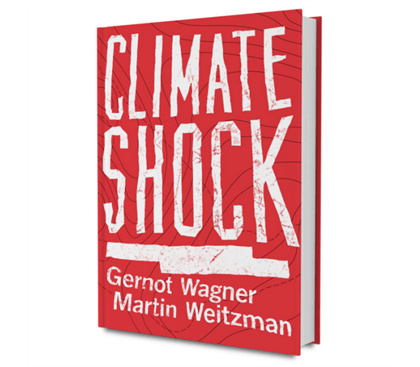Cross-posted from Climate 411.
How serious is global warming? Here’s one indication: the first rogue entrepreneurs have begun testing the waters on geoengineering, as Naomi Klein laments in her must-read New York Times op-ed.
Sadly, Klein misses two important points.
First, it’s not a question of if but when humanity will be compelled to use geoengineering, unless we change course on our climate policies (or lack thereof). Second, all of this calls for more research and a clear, comprehensive governance effort on the part of governments and serious scientists – not a ban of geoengineering that we cannot and will not adhere to. (See point number one.)
Saying that we ought not to tinker with the planet on a grand scale – by attempting to create an artificial sun shield, for example – won’t make it so. Humanity got into this mess thanks to what economists call the “free rider” effect. All seven billion of us are free riders on the planet, contributing to global warming in various ways but paying nothing toward the damage it causes. No wonder it’s so hard to pass a sensible cap or tax on carbon pollution. Who wants to pay for something that they’re used to doing for free – never mind that it comes at great cost to those around them?
It gets worse: Turns out the same economic forces pushing us to do too little on the pollution front are pushing us toward a quick, cheap fix – a plan B.
Enter the Strangelovian world of geoengineering – tinkering with the whole planet. It comes in two distinct flavors:
- Sucking carbon out of the atmosphere;
- Creating an artificial sun shield for the planet.
The first involves reversing some of the same processes that cause global warming in the first place. Instead of taking fossil fuels out of the ground and burning them, we would now take carbon dioxide out of the atmosphere and bury it under ground. That sounds expensive, and it is. Estimates range from $40 to $200 and more per ton of carbon dioxide – trillions of dollars to solve the problem.
That brings us to the second, scary flavor, which David Keith, a leading thinker on geoengineering, calls “chemotherapy” for the planet. The direct price tag to create an artificial sun shield: pennies per ton of carbon dioxide. It’s the kind of intervention an island nation, or a billionaire greenfinger, could pay for.
You can see where economics enters the picture. The first form of geoengineering won’t happen unless we place a serious price on carbon pollution. The second may be too cheap to resist.
In a recent Foreign Policy essay, Harvard’s Martin Weitzman and I called the forces pushing us toward quick and dirty climate modification “free driving.” Crude attempts to, say, inject sulfur particles into the atmosphere to counter carbon dioxide already there would be so cheap it might as well be free. We are talking tens or hundreds of millions of dollars a year. That’s orders of magnitude cheaper than tackling the root cause of the problem.
Given the climate path we are on, it’s only a matter of time before this “free driver” effect takes hold. Imagine a country badly hit by adverse climate changes: India’s crops are wilting; China’s rivers are drying up. Millions of people are suffering. What government, under such circumstances, would not feel justified in taking drastic action, even in defiance of world opinion?
Once we reach that tipping point, there won’t be time to reverse warming by pursuing collective strategies to move the world onto a more sustainable growth path. Instead, speed will be of the essence, which will mean trying untested and largely hypothetical techniques like mimicking volcanoes and putting sulfur particles in the stratosphere to create an artificial shield from the sun.
That artificial sunscreen may well cool the earth. But what else might it do? Floods somewhere, droughts in other places, and a host of unknown and largely unknowable effects in between. That’s the scary prospect. And we’d be experimenting on a planetary scale, in warp speed.
That all leads to the second key point: we ought to do research in geoengineering, and do so guided by sensible governance principles adhered to be all. We cannot let research get ahead of public opinion and government oversight. The geoengineering governance initiative convened by the British Royal Society, the Academy of Sciences for the Developing World, and the Environmental Defense Fund is a necessary first step in the right direction.
Is there any hope in this doomsday scenario? Absolutely. Country after country is following the trend set by the European Union to institute a cap or price on carbon pollution. Australia, New Zealand, South Korea, and also California are already – or will soon be – limiting their carbon pollution. India has a dollar-a-ton coal tax. China is experimenting with seven regional cap-and-trade systems.
None of these is sufficient by itself. But let’s hope this trend expands –fast – to include the really big emitters like the whole of China and the U.S., Brazil, Indonesia, and others. Remember, the question is not if the “free driver” effect will kick in as the world warms. It’s when.












